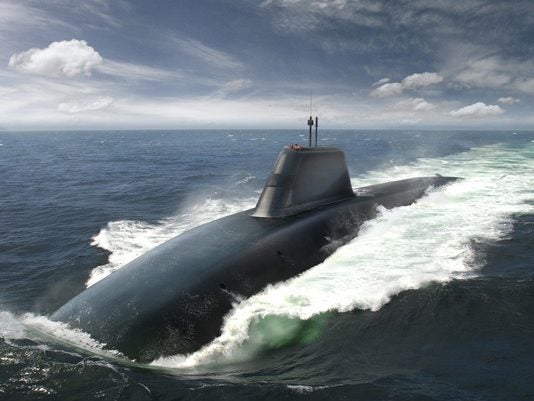
History of Submarines: From U-Boat to Dreadnought
Beginning in the First World War, submarines changed the fundamentals of naval warfare and challenged the Royal Navy’s dominance of the seas. Since then they have evolved from harassing maritime trade to becoming a fundamental pillar of global naval operations, including nuclear deterrents.
In today’s world submarines maintain their place as an integral part of naval forces, with submerged forces acting as silent guardians for the interests of the countries that control them. The Imperial German Navy’s ‘Unterseeboot’ defined the role of the submarine and, despite the name U-boat exiting mainstream use, the vessels are just as important today as they have ever been.
The U-boat threat of WWI
Submarines, although coming into existence years earlier, saw their combat capability truly tested at the onset of the First World War.
In the years preceding the war, Germany massively expanded its undersea fleet, largely in an effort to counteract the vast naval power of the UK’s Royal Navy. Huge at the time, the British fleet effectively cut off all Germany’s maritime trade, blockading the North Sea and English Channel. As a result, Germany all but gave up on attempting to confront the Royal Navy, instead adopting submarine warfare as a means of striking back.
At the onset of the war, submarine development also shook up the status quo of naval combat: commanders of the time believed that no submarine could sink a capital ship. This belief was swiftly shattered when, just months into the war, the German SM U-21 sank the scout cruiser HMS Pathfinder. The incident also showed how deep into enemy waters submarines could penetrate. The U-21 was said to have ventured deep into UK waters, reaching Forth Bridge close to the UK’s naval base in Rosyth.
By the end of war, Germany had built over 370 U-boats, sending the vessels out into the Atlantic to interfere with shipping. Most of them were Type 93 class submarines, carrying 16 torpedoes as well deck guns to guard the ships when they surfaced. Crewed by 39 sailors, the boats could travel around 9,000 miles from port.
 A WWI U-boat at sea. Image: Imperial War Museum
A WWI U-boat at sea. Image: Imperial War Museum
WWII: submarine warfare evolves
During the Second World War, submarines were employed to devastating effect in the North Atlantic. The aim of the war in the Atlantic was to destroy more ships than could be built by the US and UK. However in WW2, the U-boat fleet in the Atlantic suffered heavy losses while also spurring advancements in shipbuilding to counteract the threat.
In other theatres the Japanese Navy pioneered the use of small-scale submarines, which were intended to defend the home islands from invasion while the Royal Navy used the boats to blockade Axis-occupied Europe. WWII also saw the first and only sinking of a submerged submarine by another submarine using manual calculations that formed the basis of modern targeting computers.
In 1945, the UK’s HMS Venturer spotted the German Navy submarine U-864. After learning it was being followed the U-864 conducted evasive manoeuvres in order to escape the British sub. Venturer’s crew calculated the path of the adversarial submarine and launched torpedoes in a fan pattern, meaning that when the German U-boat turned, its crew unwittingly steered into the line of fire. Since then, no other submarine has done the same.
 HMS Voracious was one of the British submarines built for the Royal Navy during WWI
HMS Voracious was one of the British submarines built for the Royal Navy during WWI
Cold War era: nuclear-powered submarines
In the 1960s, the first British nuclear-powered submarine, and the first submarine to bear the name Dreadnought, was born from a US and UK defence partnership. The hull and offensive systems on the submarine were designed in the UK but the boat’s propulsion system was supplied by the US. Acquiring US nuclear technology rapidly sped up the development of the HMS Dreadnought, which entered service in 1963.
By the time the submarine had been completed, Rolls -Royce and its partners had generated their own nuclear propulsion system, paving the way for the UK’s next nuclear submarine to be built completely in the UK.
Although the original Dreadnought submarine was the first British nuclear-powered boat, the USS Nautilus was the first nuclear powered submarine to enter service in 1955. Nautilus broke all speed and distance records of its generation and in 1958 was the first watercraft to travel under the North Pole.
The new Dreadnought and the nuclear deterrent
Submarines have come a long way since they revolutionised underwater warfare in the WWI era. The SM U-21 a German submarine commissioned shortly before the outbreak of the war was 65m long, could travel 50m, below the surface, and had a displacement of 824 tonnes when submerged.
In comparison, the Royal Navy’s new Dreadnought class of nuclear deterrent carrying submarines will be the largest ever built for service, at 150m long with a displacement of more than 17,000 tonnes. The ship will also be the first to simulate night and day schedules through lighting to make the transition from surface to submersion easier for the crew.
Yet another one to be named HMS Dreadnought, the first in class is in development by BAE Systems with support from Rolls-Royce. The programme will eventually deliver four submarines to replace the current Vanguard class of submarines, meaning the UK will be able to have at least one submarine at sea at all times. Like the Vanguard, Dreadnought will generate its own fresh water and oxygen, meaning the submarine only has to surface when it runs out of food.
The HMS Dreadnought is expected to be in service with the Royal Navy from the early 2030s according to the Ministry of Defence’s Submarine Delivery Authority.



